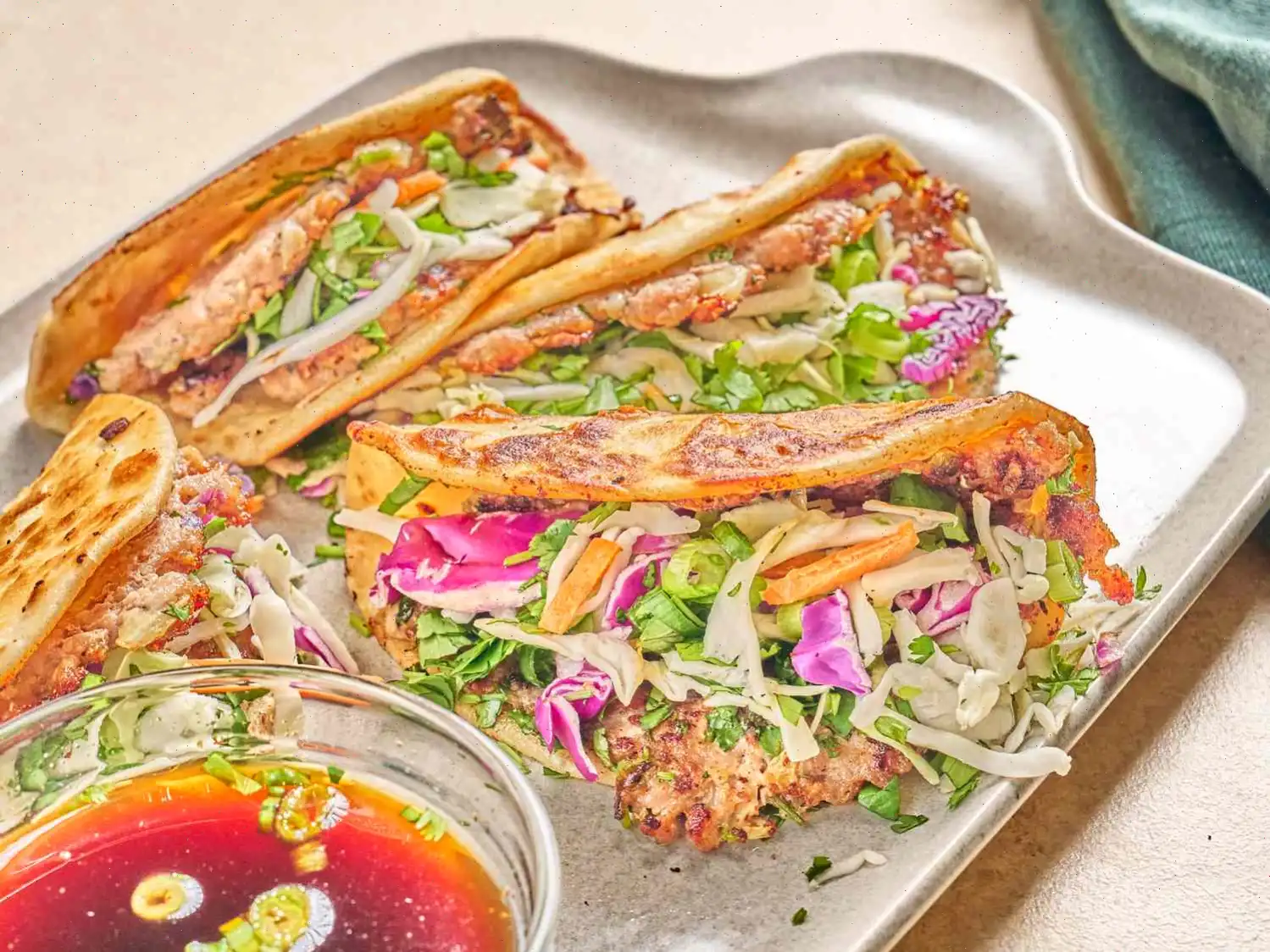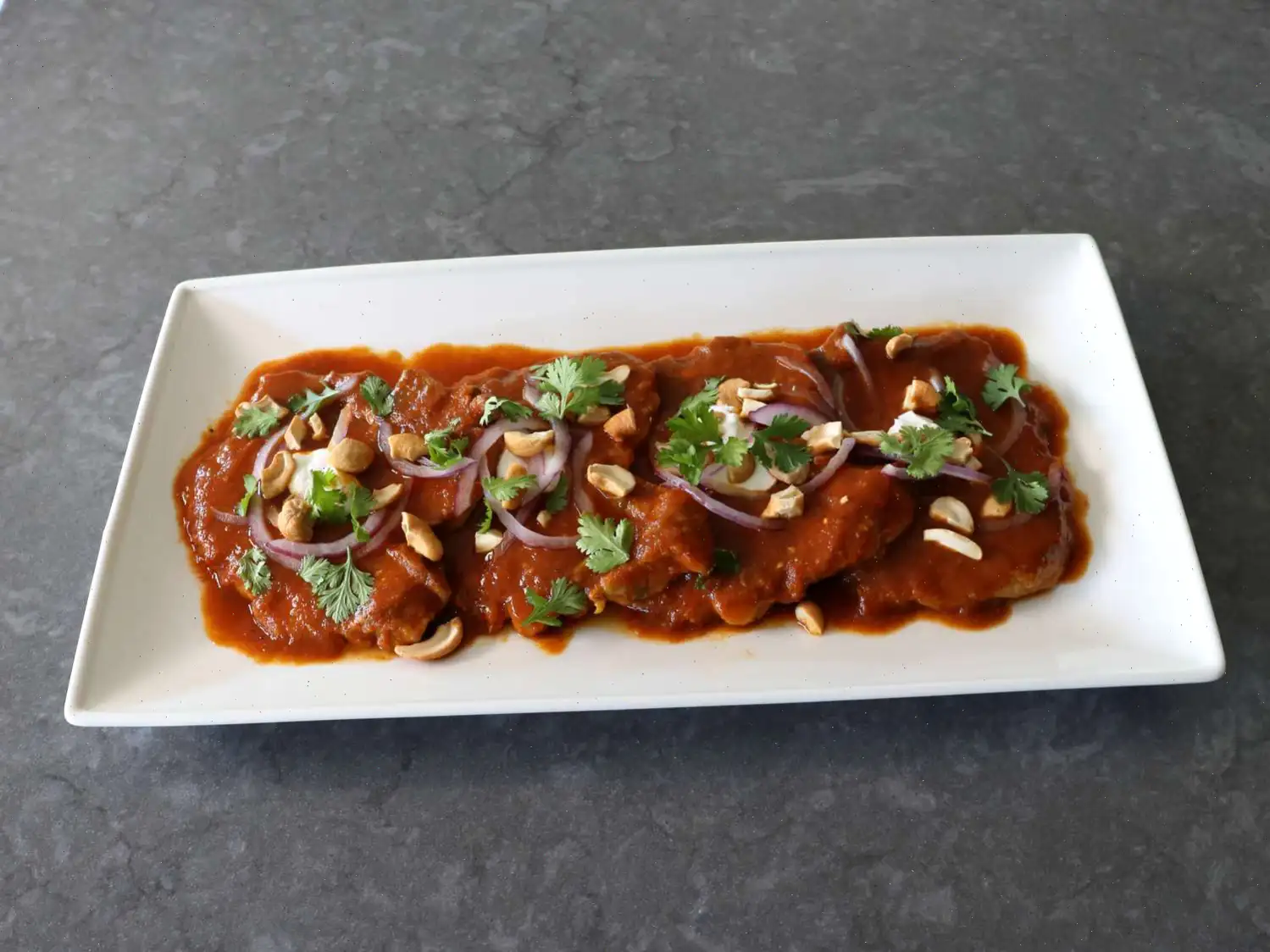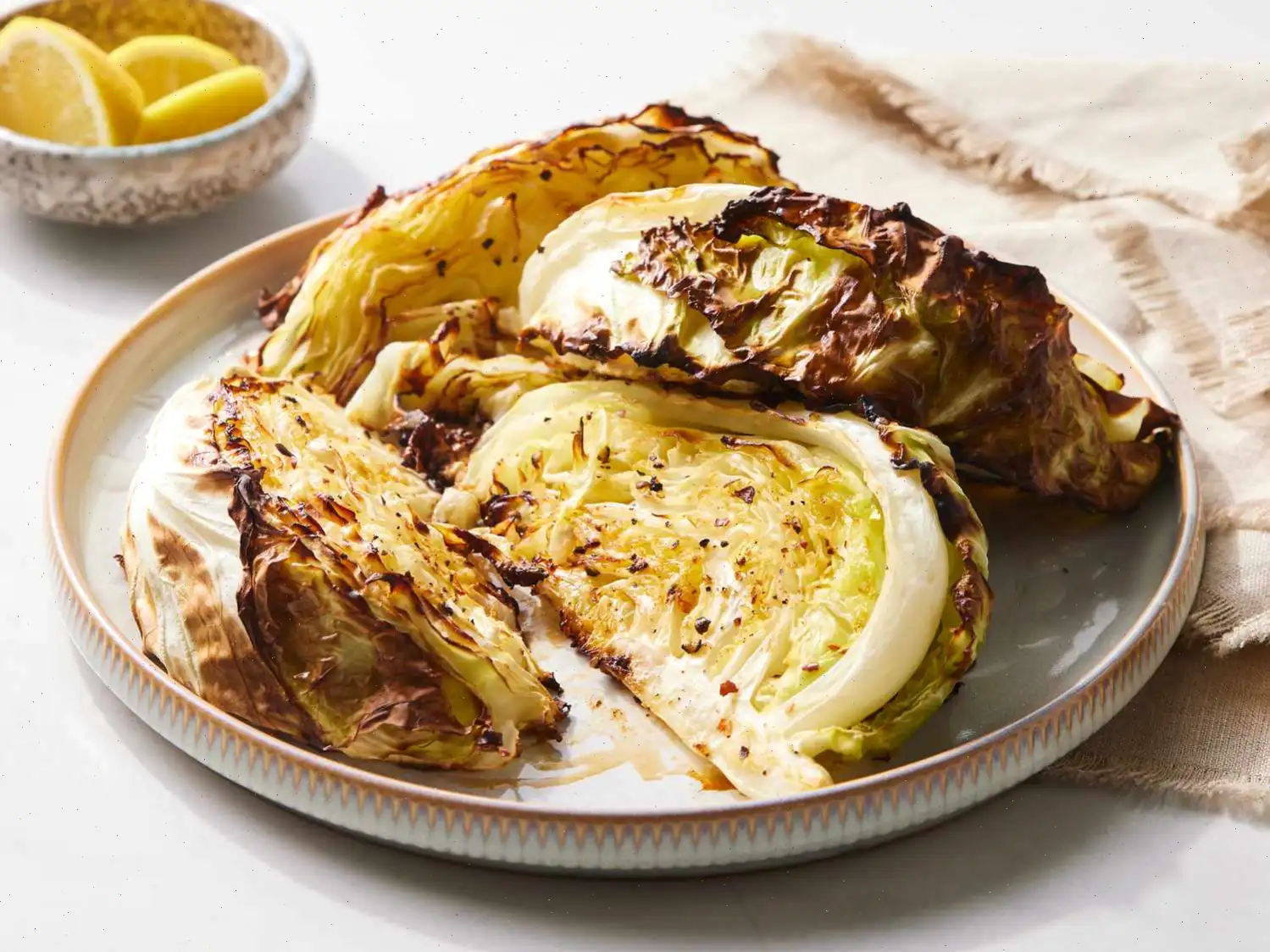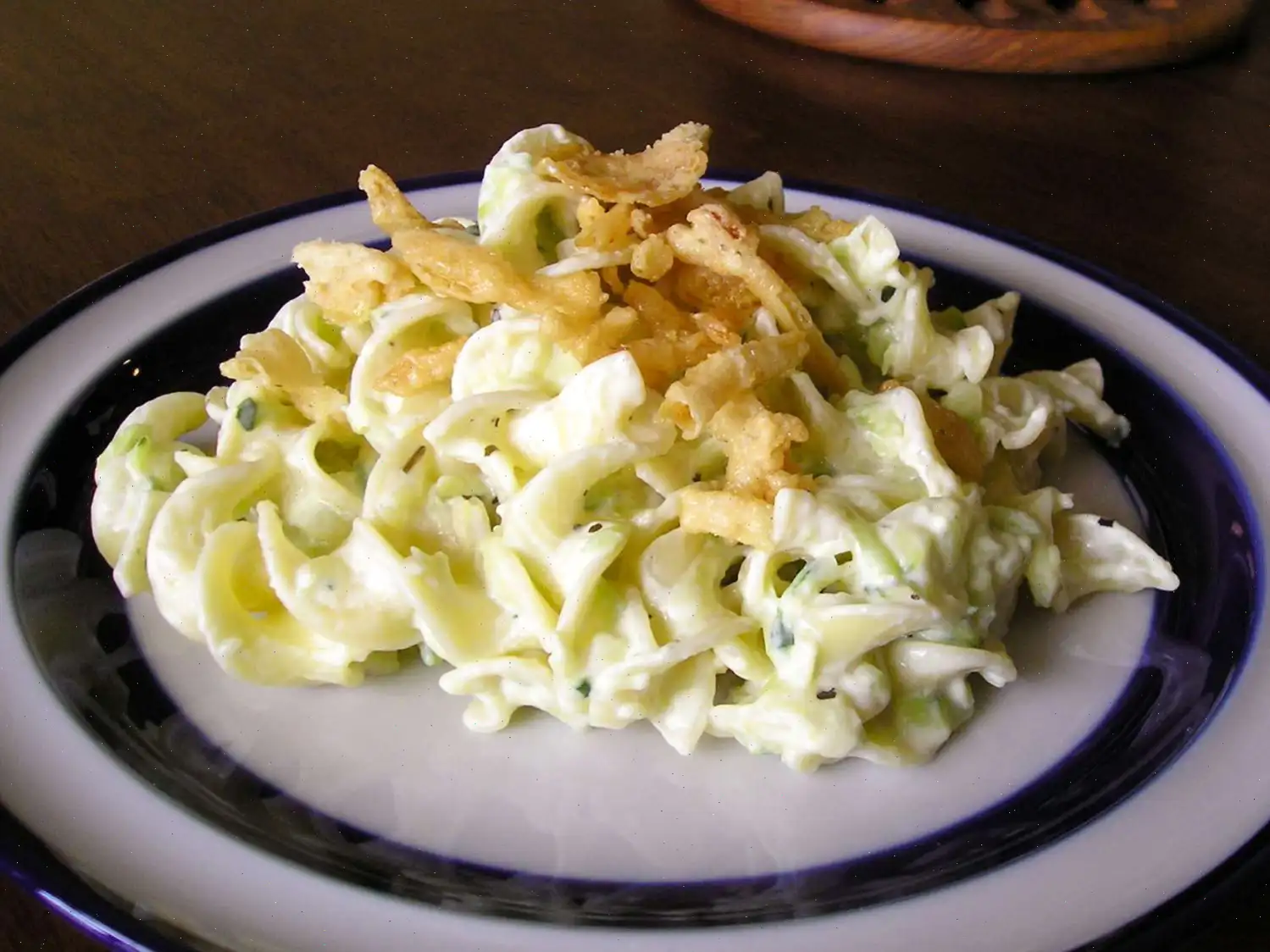
Ashley's Chicken Katsu with Tonkatsu Sauce Recipe
Ingredients
This recipe was developed at its original yield. Ingredient amounts are automatically adjusted, but cooking times and steps remain unchanged. Note that not all recipes scale perfectly.
Original recipe (1X) yields 2 servings
Sauce
- cup Worcestershire sauce
- cup ketchup
- 2 tablespoons soy sauce
- Pepper to taste
Chicken
- 2 cups vegetable oil, for deep-fat frying
- cup all-purpose flour
- cup panko bread crumbs
- Salt and pepper to taste
- 1 egg, beaten
- 2 skinless, boneless chicken breast halves - pounded to inch thickness
- 1 green onion, thinly sliced
Directions
- For the sauce, stir together the Worcestershire sauce, ketchup, soy sauce, and a pinch of pepper to taste. Set aside.
- Heat oil in deep-fryer to 350F (175C).
- Place flour and panko bread crumbs onto separate plates and season with salt and pepper. Place the beaten egg in a medium bowl.
- Dip flattened chicken pieces first into flour, then into the egg, and lastly into the bread crumbs.
- Fry the breaded chicken breasts in the preheated oil until golden brown and no longer pink in the center, about 8 minutes.
- Transfer the fried chicken to a paper towel-lined plate to absorb any excess oil.
- Slice the chicken into thin strips and top with a drizzle of sauce and a sprinkling of sliced green onions.
- Serve the remaining sauce on the side for dipping.
Nutrition Facts (per serving)
- Calories: 718
- Total Fat: 37g (47% Daily Value)
- Saturated Fat: 7g (34% Daily Value)
- Cholesterol: 137mg (46% Daily Value)
- Sodium: 2290mg (100% Daily Value)
- Total Carbohydrate: 73g (27% Daily Value)
- Dietary Fiber: 2g (6% Daily Value)
- Total Sugars: 15g
- Protein: 30g (60% Daily Value)
- Vitamin C: 15mg (17% Daily Value)
- Calcium: 127mg (10% Daily Value)
- Iron: 7mg (39% Daily Value)
- Potassium: 947mg (20% Daily Value)
* Percent Daily Values are based on a 2,000-calorie diet. Your daily values may be higher or lower depending on your calorie needs.
** Nutrient information is not available for all ingredients. Amount is based on available nutrient data.
If you are following a medically restrictive diet, please consult your doctor or registered dietitian before preparing this recipe for personal consumption.

History of Chicken Katsu
Chicken Katsu, a Japanese dish, is believed to be inspired by Western-style cutlets introduced to Japan during the Meiji period (1868-1912). The term "katsu" comes from the Japanese word "katsuretsu," meaning "cutlet," which was adapted from the English word "cutlet." While pork katsu (tonkatsu) is more commonly known, the chicken version (chikin katsu) became popular due to its lighter and more accessible nature. Over the years, chicken katsu has become a staple in Japanese cuisine, often served with rice, cabbage, or as part of a larger meal.
Regional Variations of Chicken Katsu
Though chicken katsu is a standard dish throughout Japan, there are regional differences in its preparation and accompanying sauces. For example, in Okinawa, it may be served with a tangy vinegar-based sauce, while in the Kansai region, a sweeter variation of tonkatsu sauce may be used. Each area adds its own flair, often tweaking the breading or sauce ingredients. The dish is also commonly found in Western-style Japanese restaurants around the world, often adapted to local tastes.
Difference from Similar Dishes
Chicken katsu is similar to other breaded and fried cutlets, such as schnitzel from Germany or fried chicken from the United States, but it is distinguished by its use of panko bread crumbs, which create a lighter, crispier crust. The accompanying tonkatsu sauce is also unique to Japanese cuisine, with a sweet and savory flavor profile, unlike many Western sauces that might be tangy or spicy. Tonkatsu, which is the pork version of the dish, is considered a close relative, with similar preparation but a different meat base.
Where is Chicken Katsu Usually Served?
Chicken katsu is commonly served in a variety of settings in Japan, ranging from casual family meals to high-end restaurants. It is often included in a bento box or served as part of a set meal (teishoku), accompanied by rice, miso soup, and pickles. In international settings, you may find chicken katsu at Japanese restaurants, food courts, or even as a popular street food item. Its popularity has also spread beyond Japan, with many home cooks across the globe preparing this dish as a simple yet flavorful meal.
Interesting Facts About Chicken Katsu
- In Japan, chicken katsu is sometimes served with a fried egg on top, which is called "katsu-don." The egg is often cooked just until the yolk is soft, creating a rich complement to the crispy chicken.
- Chicken katsu is a popular dish for lunch or dinner in Japanese homes, thanks to its quick cooking time and satisfying nature. It is considered a comfort food, often enjoyed after a long day.
- Though the chicken katsu recipe has remained fairly consistent, variations exist for different dietary needs, such as gluten-free versions that use corn starch or gluten-free panko bread crumbs.
- For those who want a less oily version, chicken katsu can also be baked in the oven instead of deep-fried, offering a healthier alternative while maintaining the crispy texture.
Conclusion
Ashleys Chicken Katsu with Tonkatsu Sauce is a delightful dish that captures the essence of Japanese comfort food. Whether you're making it at home or enjoying it in a restaurant, this dish offers a satisfying balance of crispy chicken and flavorful sauce. Its history, regional variations, and distinct characteristics set it apart from similar dishes, making it a favorite worldwide. Plus, with the flexibility to adjust the recipe to personal tastes, its a dish that can be enjoyed by all!
You can listen to this recipe in AI audio format. Simply click the play button below to listen to the content in a format that suits you best. It’s a great way to absorb information on the go!
FAQ about Ashley's Chicken Katsu with Tonkatsu Sauce Recipe
Comments
Ronald Parker
11/13/2023 02:30:09 PM
I thoroughly enjoyed this recipe, with just a few modifications to enhance the flavor of the chicken. To prevent it from being bland, I seasoned the chicken with garlic powder, salt, black pepper, granulated toasted onion, and smoked paprika before following the breading and frying process. A key tip I discovered was to heat the oil on medium-high and then reduce it to medium-low just before adding the chicken to the pan. This ensured that the chicken cooked thoroughly, remained moist, and the breading turned golden brown and crispy. Keeping the temperature at the right level is crucial to avoid burning the breading before the chicken is cooked through. Overall, a delicious outcome! Enjoy!
Stephen Campbell
08/17/2023 08:29:19 AM
Delicious! Wouldn't make any changes. I will definitely be making it again.
Jack Campbell
02/18/2024 12:34:05 PM
No need for excessive sauce.








